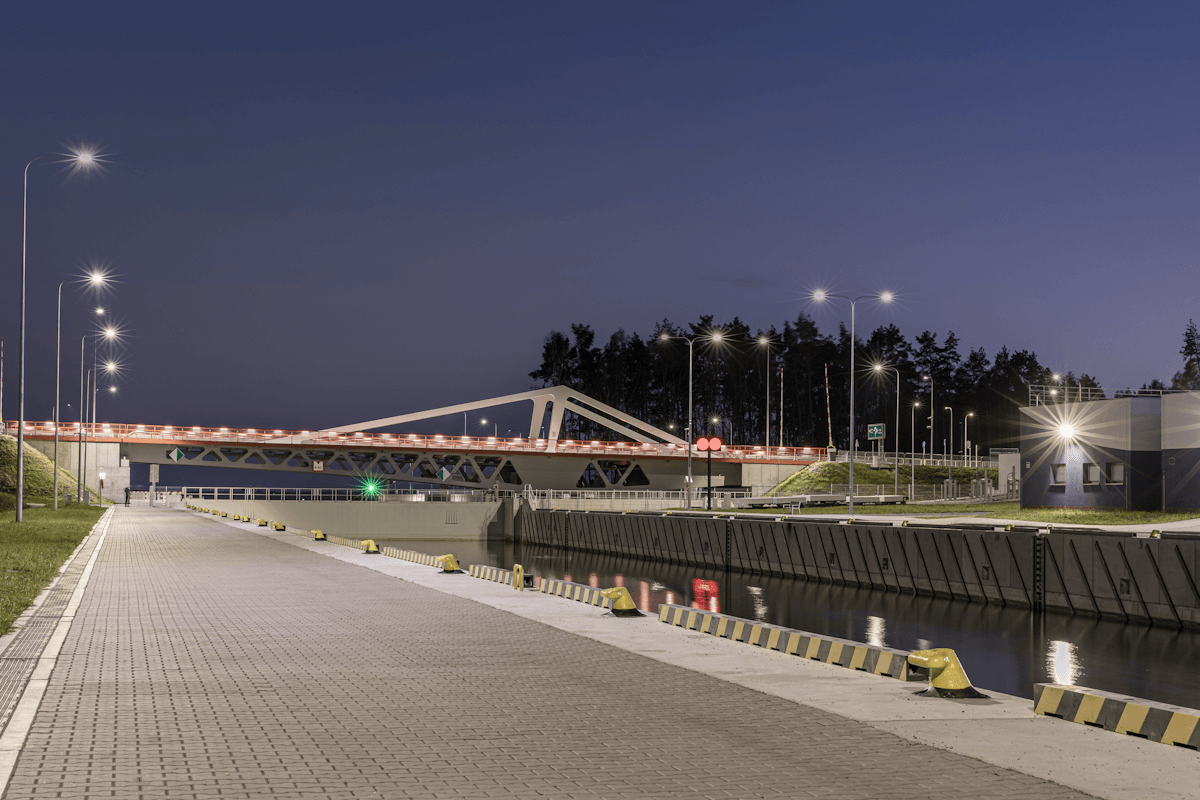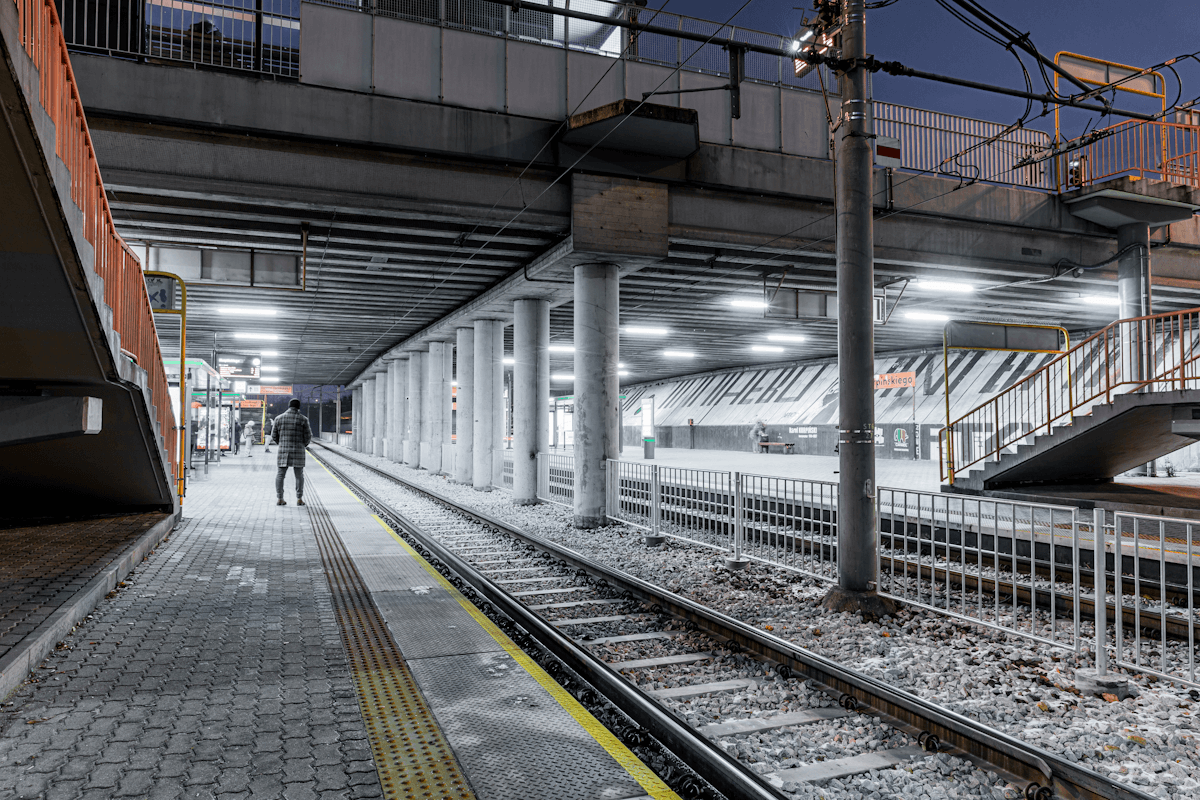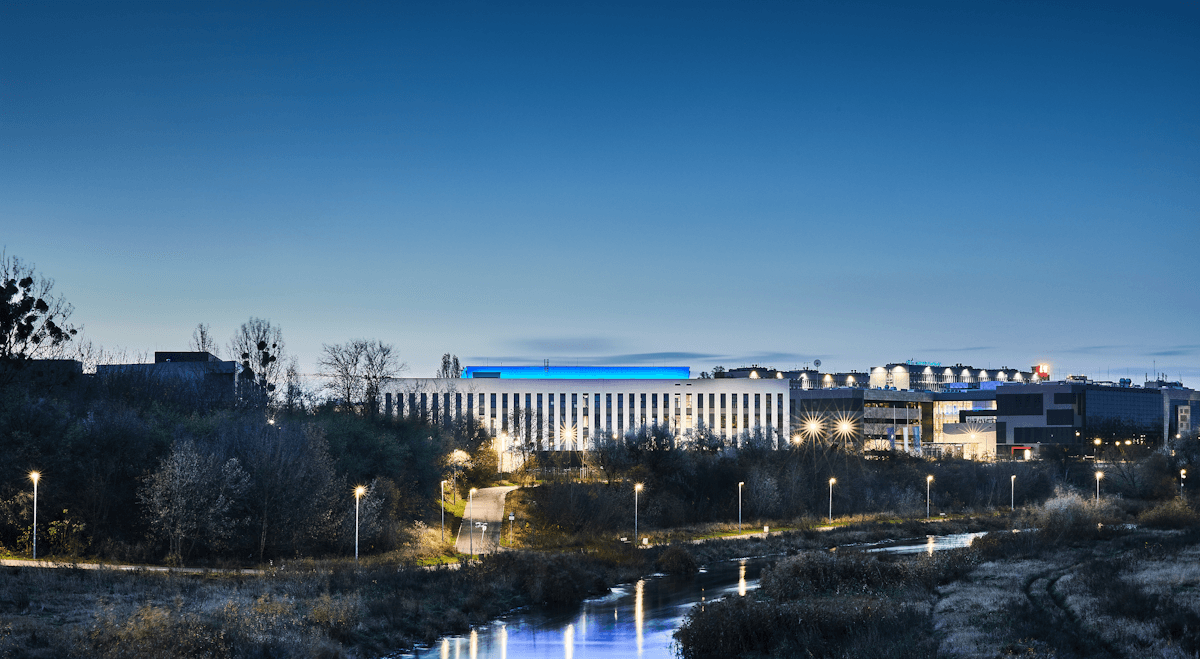Lighting in transport buildings key to safe travel and efficient work
In today's dynamic world, traveling has become an integral part of our lives, and lighting in transportation buildings plays a key role in ensuring safe, comfortable and efficient travel.
Safe and well-lit train stations,airports and ports are not only essential for the smooth operation of transport infrastructure, but also influence passengers' overall travel experience. Installing appropriate lighting systems in these facilities poses the challenge of providing the right amount of light for various weather conditions and times of day. High-quality lighting also ensures the comfort and safety of people using public transport and the staff operating these facilities.

In this article, we will discuss the use of lighting in various transportation buildings, focusing on the specific requirements for each building type.
For example, lighting in railway stations should be designed to provide adequate visibility on platforms, footbridges and intersections, while minimizing glare that may disturb passengers.
At airports the lighting should be bright enough to ensure proper maneuvering on the runway and safe take-off and landing of aircraft.
Inseaports, lightingshould be weatherproof, waterproof and provide adequate visibility on quays, waterways and loading areas.
We will discuss the latest trends in 2025 and technologies used in lighting for communication buildings, such as intelligent lighting systems that automatically adjust light intensity depending on weather conditions and time of day, as well as the use of energy-saving LEDs to reduce energy consumption and operating costs. We will also pay attention to innovative lighting designs, which combine lighting and building structure, creating unique visual effects and emphasizing the beauty of communication spaces.
Safety first
In any transport environment, the safety of passengers and employees is always the highest priority. Lighting plays an important role here, not only ensuring visibility, but also influencing safety and comfort of movement. The interiors of stations, airports and ports must be well lit to facilitate traffic flow and prevent accidents.
From a safety point of view, it is important not only to provide adequate lighting, but also to minimize reflections and shadows that can cause disorientation and make it difficult to identify threats.
In railway stations, the lighting of platforms, corridors and stairs should be evenly distributed so that both close and distant objects are visible. Moreover, the color temperature of properly selected light affects the sense of security, and warmer light looks more pleasant and provides psychological comfort.

For airports, lighting must be adapted to the specific requirements of air operations. For example, runway operational areas require adequate lighting to ensure aircraft can maneuver properly during landing and take-off. In addition, runway and taxiway lighting should be designed to provide visibility in adverse weather conditions such as fog and snowfall.
In ports, lighting must be resistant to weather conditions, so it is important to use special solutions that ensure not only visibility, but also safe operation of the port. Properly designed lighting of quays, piers and loading docks is crucial for the efficient operation of ports and minimizing the risk of accidents.
These results highlight the importance of lighting not only as a functional element, but also as a safety and efficiency factor in the transportation environment. The use of appropriate technologies and design strategies can ensure visibility, as well as safety and comfort for all users of these spaces.
Energetic efficiency
Energy efficiency has become an important factor in the lighting design of communication buildings as environmental awareness increases. Compared to conventional light sources such as halogen and fluorescent bulbs, LEDs (light-emitting diodes) use significantly less energy and have a longer lifespan. Due to their high efficiency, LEDs are increasingly used for external and internal lighting in road buildings.
In addition, energy consumption control can be even better thanks to lighting management systems. Motion sensors, timers and automatic shut-off systems ensure that lighting is only turned on when needed, significantly reducing energy consumption and operating costs. These systems can also adjust the lighting intensity depending on the intensity of natural light, which further optimizes energy consumption.
Moreover, advances in lighting control technology have made it possible to integrate lighting systems with other building systems such as HVAC systems and energy management systems. This enables even greater energy efficiency to be achieved by coordinating the operation of various systems to minimize energy consumption and operating costs.
As a result, the use of energy-saving lighting technologies and lighting management systems not only contributes to environmental protection byreducing carbon dioxide emissions and other pollutants but also saves money by reducing electricity and maintenance costs. Energy efficiency is therefore an integral part of the lighting design strategy for modern transport buildings and supports both environmental and economic objectives.
State-of-the-art solutions and technologies
We are witnessing the dynamic development of lighting technology, which is revolutionizing the way transport buildings are illuminated.
Intelligent lighting systems with advanced motion sensors can detect the presence of people in the room and adjust the light intensity depending on needs. Moreover, by adjusting the light intensity, the system can precisely respond to changing lighting conditions during the day and night.
One of the innovative solutions is an intelligent lighting system based on IoT (Internet of Things) technology. By connecting the lighting to the Internet, all light points in the transport building can be remotely monitored and controlled. By analyzing data from motion, temperature and natural light sensors, the system can automatically adjust lighting to save energy and ensure optimal visual comfort.
Another important element of intelligent lighting systems are advanced control algorithms that can take into account not only lighting data, but also user preferences and external conditions, such as weather and seasons. In this way, the lighting can be individually adapted to the needs of specific areas of the transport building, ensuring optimal viewing conditions with minimal energy consumption. Another interesting solution is a lighting system based on Li-Fi (Light Fidelity) technology, which uses light to transmit data. In this way, lighting can perform new functions, enabling communication between IoT devices and providing Internet access where traditional wireless networks are not available.
As a result, intelligent lighting systems not only save energy and improve visual comfort, but also offer new possibilities for the management of transport buildings. As new technologies are developed and implemented, it is expected that lighting in these locations will continue to improve, further increasing efficiency and innovation in the transportation sector.
Lighting as part of architecture
In addition to functionality, lighting is becoming an integral part of the architectural design of transport. Modern lighting systems offer a wide range of possibilities for shaping space and discovering the unique character of buildings. For example, LED spot lighting can be used to highlight the geometry of buildings and create a sense of three-dimensionality and depth. In addition, flexible LED strips can be used to illuminate decorative elements such as vertical facades or the edges of stairs, adding a subtle accent to the lighting.
Modern lighting systems also allow you to experiment with various lighting effects, such as changing light color, flickering or flickering, creating dynamic and visually attractive light scenes. In this way, lighting can serve not only a practical function, but also an aesthetic one, giving objects a unique look and creating a different atmosphere.

One of the innovative solutions in the design of architectural lighting are lighting systems integrated with building facades.
Special lighting panels can be used to create dynamic patterns and graphics on building facades that can change depending on the time of day or scene. Such solutions can turn a building into an advertising tool or a work of art, attracting attention and further emphasizing its unique character.
In summary, lighting is not only a functional element, but also an important part of the aesthetic and visual identity of a transportation building. Using the latest technologies and a creative approach to lighting design, architects can create unique and inspiring spaces that attract users' attention and remain in their memory.
Lighting in transportation facilities plays an important role in ensuring safety, efficiency and aesthetics. The dynamic development of lighting technology will lead to an increase in the number of intelligent, energy-saving and attractive solutions.
Undoubtedly, innovative approaches to lighting will continue to transform these spaces and create more comfortable, safe and efficient environments for all users.
FAQ:
Why is lighting important in transportation buildings?
Lighting in transportation buildings plays an important role in ensuring the safety, efficiency and comfort of travel. Properly designed lighting can facilitate traveling in various weather and lighting conditions, minimize the risk of accidents and provide passengers with psychological comfort.
What are the advantages of intelligent lighting systems in transport buildings?
Smart lighting systems can automatically adjust lighting levels to external conditions and user needs, thereby contributing to energy savings and optimizing visual comfort. They also facilitate the management of lighting infrastructure in communication buildings because they enable remote monitoring and control of lighting.
What are the lighting challenges in transportation buildings?
One of the main challenges is to ensure adequate light levels and minimize glare and shadows. Additionally, lighting in transportation buildings must be weatherproof and meet the specific requirements of transportation operations such as aircraft takeoffs and landings and port operations.